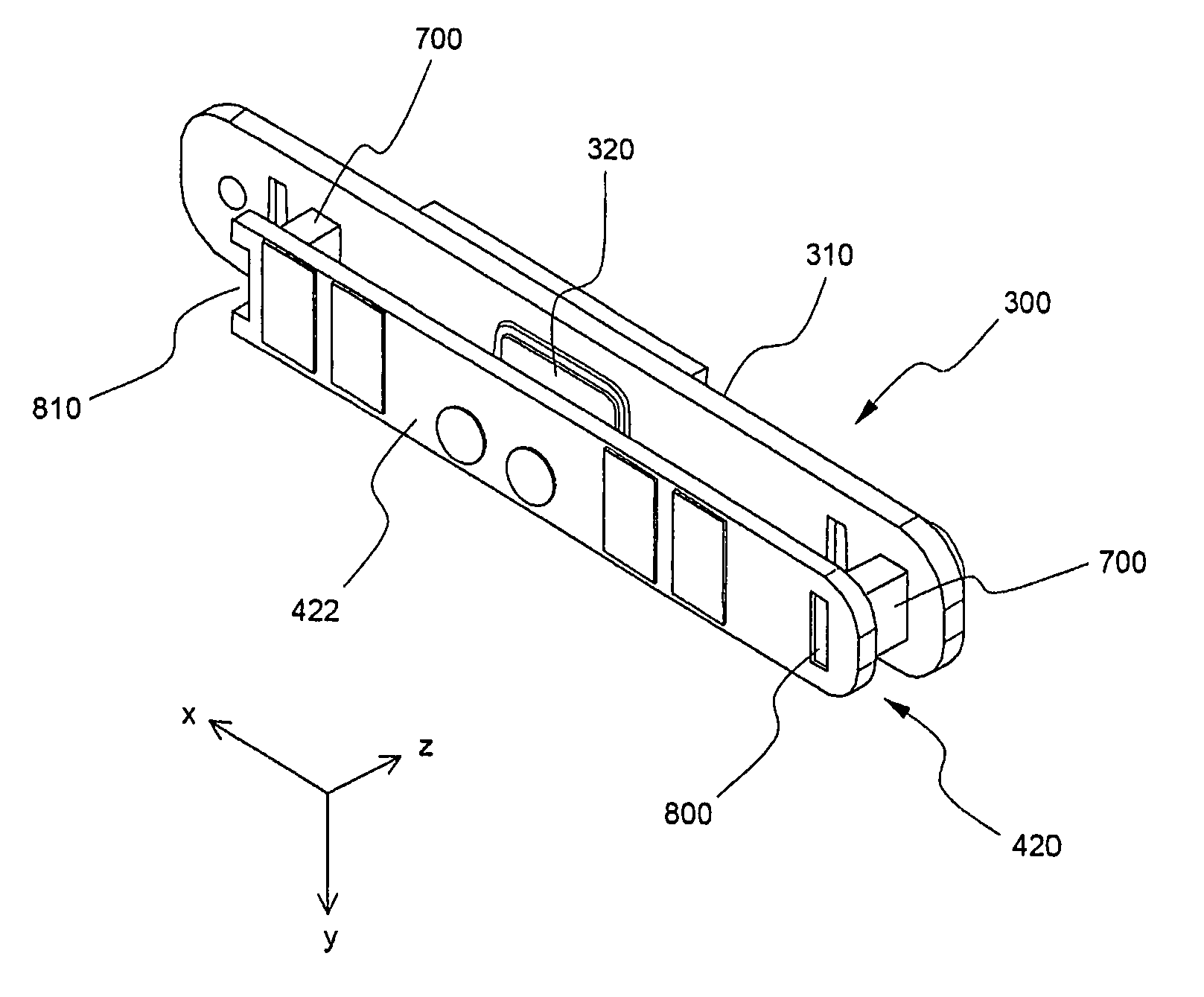Unification type cap assembly containing protection circuit board and secondary battery comprising the same
a protection circuit board and secondary battery technology, applied in the direction of batteries, primary cell maintenance/service, sustainable manufacturing/processing, etc., can solve the problems of high manufacturing cost, high price and incompatibility, and increase manufacturing cost, so as to reduce the frequency of defective products and facilitate battery manufacturing
- Summary
- Abstract
- Description
- Claims
- Application Information
AI Technical Summary
Benefits of technology
Problems solved by technology
Method used
Image
Examples
Embodiment Construction
[0055]Preferred embodiments of the invention will now be described with reference to the drawings. It should be noted that the embodiments are disclosed for the purpose of illustration, and do not limit the scope of the invention.
[0056]FIG. 8 is an exploded perspective view of a secondary battery in accordance with one preferred embodiment of the invention, and FIG. 9 is a perspective view of the secondary battery of FIG. 8 in an assembled state.
[0057]Referring to FIGS. 8 and 9, a secondary battery 100 comprises a battery can 200 into which an electrode assembly 210 consisting of a cathode, an anode and a separator is inserted, a top cap 300 mounted on an opening of an upper end of the can 200, and a cap subassembly 400 mounted on the top cap 300.
[0058]The top cap 300 comprises a plate 310 made of an electrically conductive material, such as aluminum, a protruded terminal 320 formed on the conductive plate 310 so as to be insulated from the conductive plate 310 and connected to the ...
PUM
| Property | Measurement | Unit |
|---|---|---|
| conductive | aaaaa | aaaaa |
| frequency | aaaaa | aaaaa |
| thickness | aaaaa | aaaaa |
Abstract
Description
Claims
Application Information
 Login to View More
Login to View More - R&D
- Intellectual Property
- Life Sciences
- Materials
- Tech Scout
- Unparalleled Data Quality
- Higher Quality Content
- 60% Fewer Hallucinations
Browse by: Latest US Patents, China's latest patents, Technical Efficacy Thesaurus, Application Domain, Technology Topic, Popular Technical Reports.
© 2025 PatSnap. All rights reserved.Legal|Privacy policy|Modern Slavery Act Transparency Statement|Sitemap|About US| Contact US: help@patsnap.com



